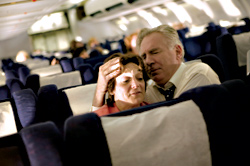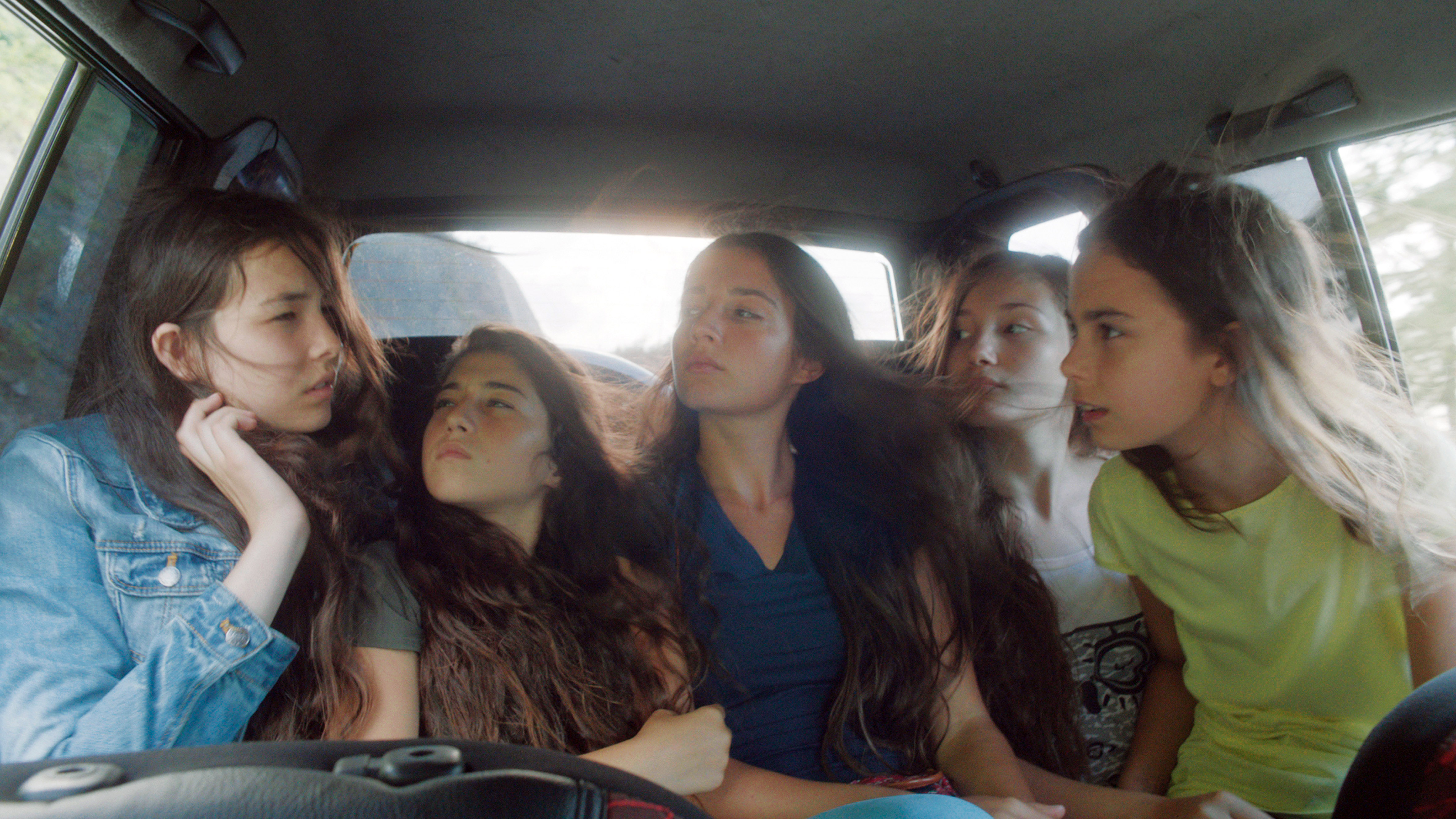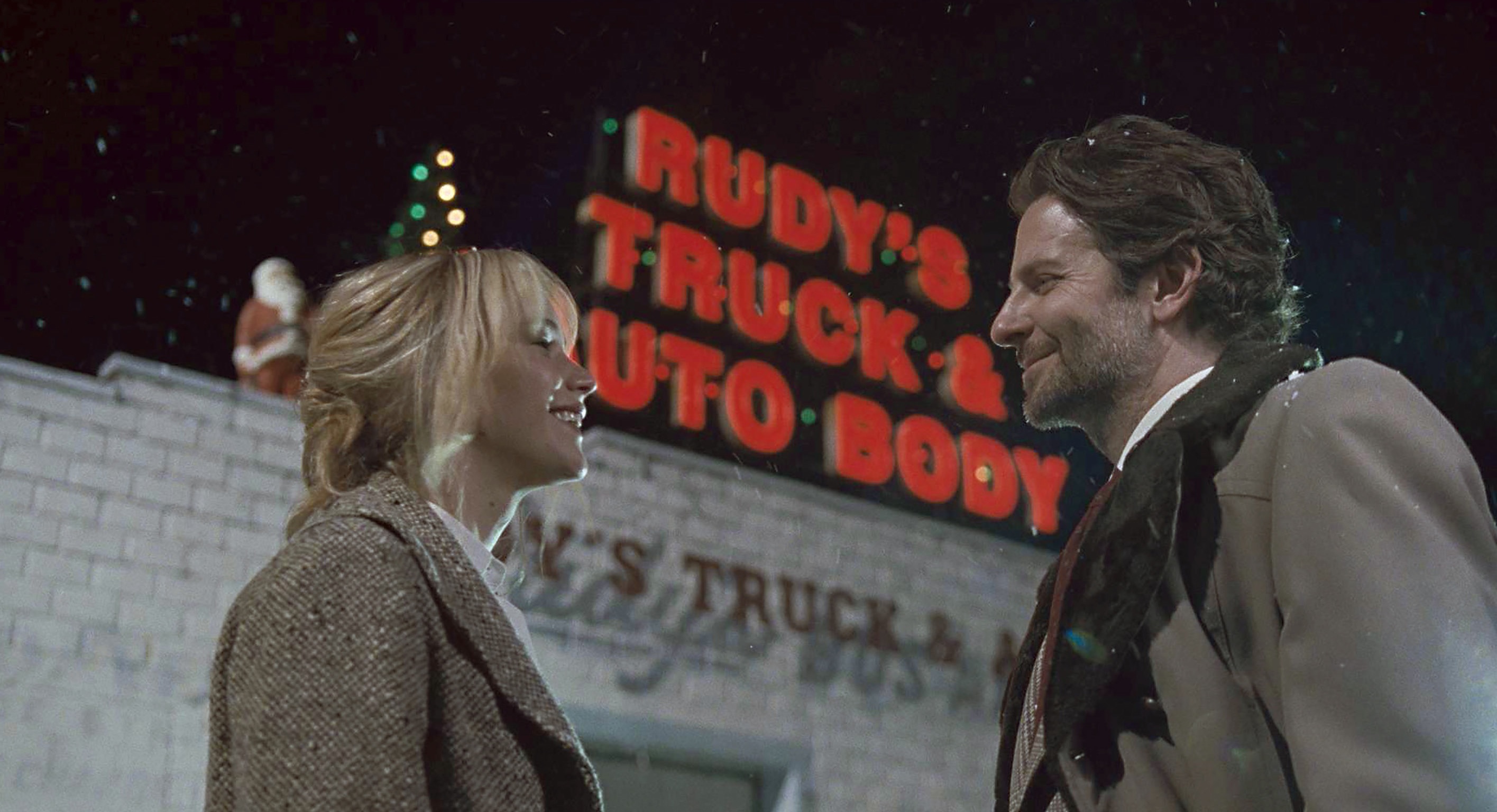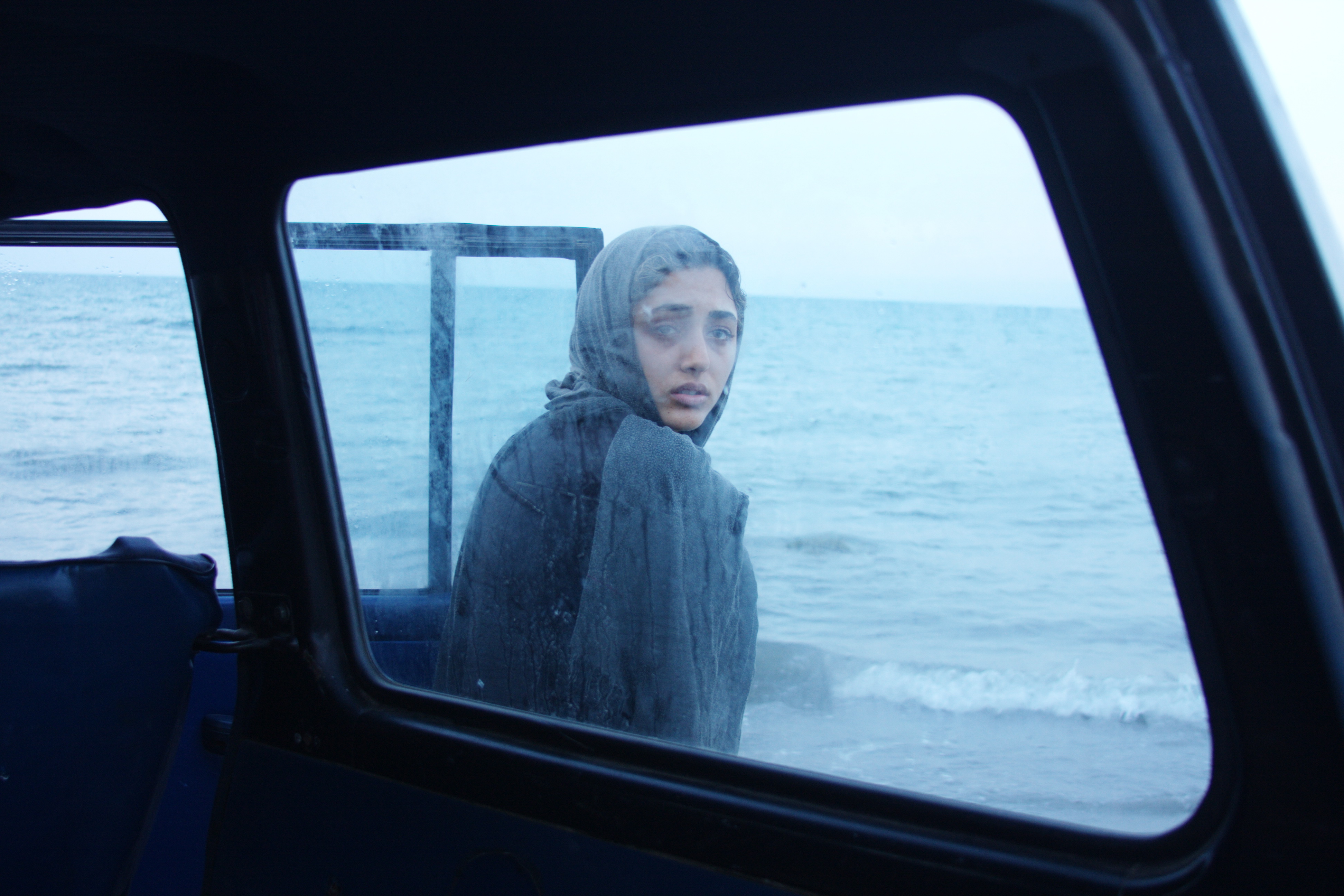By the time Hollywood got around to addressing Pearl Harbor, we already knew the outcome of World War II. No matter the horror and surprise depicted, Midway and Tora! Tora! Tora! and From Here to Eternity were made bearable because we knew, in the end, that right had prevailed. We took a licking, but we fought back against a clearly defined enemy. There is no such consolation in the searingly unsensationalistic and despairingly gutsy United 93, written and directed by Paul Greengrass (Bloody Sunday, The Bourne Supremacy) in his visceral you-are-there shaky-cam vérité style. His brilliantly edited, no-star docudrama basically follows the 9/11 chronology in real time. Reasonable conjecture fills the gaps between the doomed passengers’ phone calls, air-traffic records, and black-box recordings. (These accounts gain extra poignancy and power with the audiotapes released earlier this month for the trial and sentencing of 9/11 co-conspirator Zacarias Moussaoui.)
The film never mentions Bush or bin Laden. It limits its view to the few hours leading up to the events of Sept. 11, 2001, and goes no further. Iraq is not mentioned, nor is Saudi Arabia. The four hijackers have no depth or dimension. Names don’t matter among the other 40 passengers and crew. “Let’s roll” is a muttered afterthought. Heroism has a dark double in fanaticism. Two factions on a Boeing 757 are willing to die to get what they want. They both pray. They both fear. They both call home to say, “I love you,” before certain death. They both fail and triumph in a gruesome parallel story of two takeovers on a routine United Airlines flight from Newark, N.J., to San Francisco. As one air-traffic controller puts it, “It’s a beautiful day for flying.” Exactly, that’s the problem.
So why should we get on board when we know the destination? There can’t be any drama here; as in Bloody Sunday, the tragic outcome is a given. Any potential filmgoer can be forgiven for asking, “Do I have to see this movie again?” I would let you off the hook if it were about American Flight 11 or United Flight 175, both of which struck the World Trade Center. We’ve seen those CNN images, still profane, too many times before; and Greengrass does include some of that footage here. But there are no images of United 93, only words and transcripts and tapes. It’s a story that needs to be told. Although books and two TV movies have already treated the same subject, the difference is that United 93 is an artwork, one whose main limitation is that it comes too soon, before the battlefield has settled. You can’t feel catharsis when the war’s not over. You can only hold your breath.
“Asymmetrical warfare” is the clunky phrase that keeps coming to mind during United 93, in which the modern marvel of flight, all our high-tech circuitry, is subverted by a few box cutters and knives. Low-tech prevails twice—for worse, and then better. The FAA controllers and military leaders can’t communicate vital information, can’t grasp what’s happening on their computer screens. At least half the movie takes place on the ground, as unprepared bureaucrats scramble mightily to catch up to their monitors, trying to track the four rogue planes amid chaos. (Overheard: “Do we have any communication with the president at all? How long can that take?”) True to his documentary roots, Greengrass casts real FAA officials, United pilots, and ex–flight attendants in key roles. As in his equally inexorable 2002 Bloody Sunday, historical facts and figures are more compelling than fiction—even if this script was actually written by bin Laden and Atta.
The FAA and military can’t respond fast enough to this unanticipated, subdigital, subnational threat. The Newark tower crew first looks over the Hudson to see the north tower of the World Trade Center shattered and smoking four minutes after American Flight 11 has disappeared from the radar. United Flight 93 had departed four minutes before that plane struck. No one is prepared but the hijackers, led by pilot Ziad (Khalid Abdalla, one of four extremely brave and commendable Arabic-speaking actors), who wears glasses and seems the most patient. Our enormous national might is bound and staked by the lilliputian jihadis.
That’s why, when the counterstrike comes (lasting all of six minutes in real time), it’s so like the first assault. Cowering in the back of the plane, herded by what might be a fake bomb, United 93’s surviving passengers and crew form a smart mob, a Craigslist meet-up in a life-or-death situation: “Nobody’s gonna help us. We gotta do it.” (Among the ad hoc leaders, wearing a Cal rugby cap, Seattle theatergoers will recognize Cheyenne Jackson as Mark Bingham.) They call home to ask what’s on CNN. They say their farewells, give their loved ones the combinations to safe deposit boxes where their wills are kept. Phones, not guns, are their first line of national defense.
Besides all the frantic talk and phone calls on the ground and in the air, there’s a remarkable amount of prayer in United 93. The hijackers chant “Allah akbar” while slitting throats, while the dissenters on board pray to their own gods (seemingly all Judeo-Christian), before arming themselves with fire extinguishers, dining utensils, boiling water, wine bottles, and serving carts. Their violent actions run tandem to the hijackers’, only with different motives and beliefs.
On the ground in Newark, before boarding the jet, Ziad calmly surveys his future victims, who chat on cell phones, read newspapers, and sip coffee. In some ways, the scene is more disturbing than the jet’s final plunge into the Pennsylvania mud. Not because we should be paranoid that there are many more Ziads among us, but because conditions have changed so little—become worse, in fact, thanks to Iraq—in the past five years. We still don’t understand this guy, and he’s not interested in understanding us.








